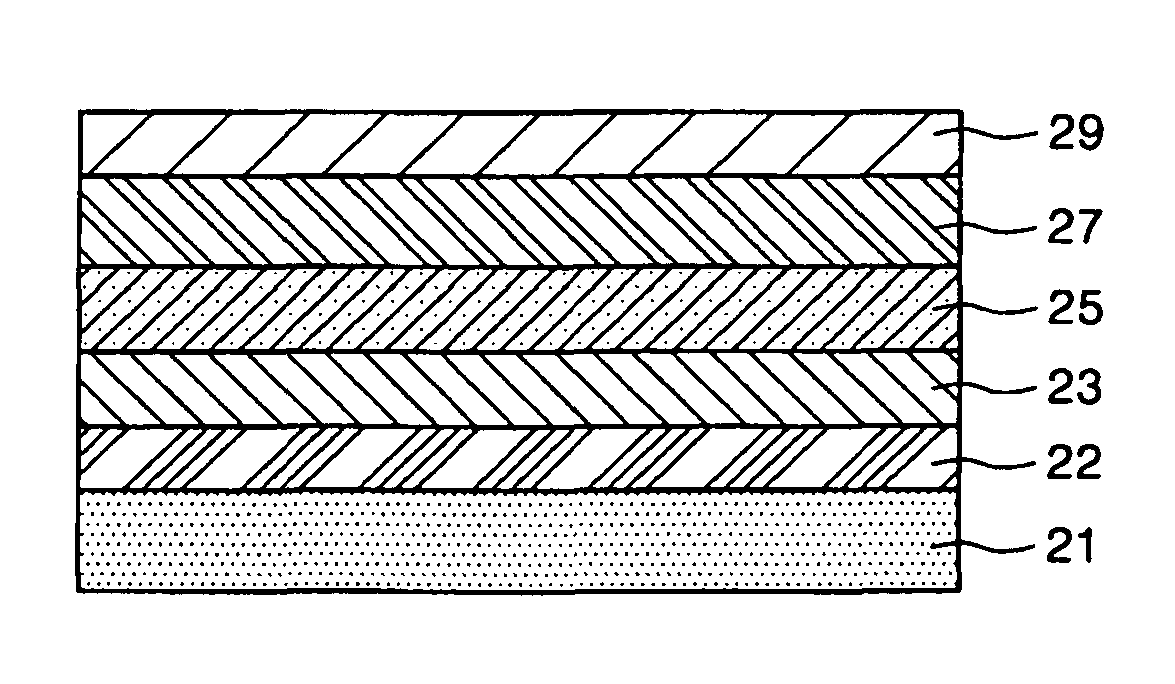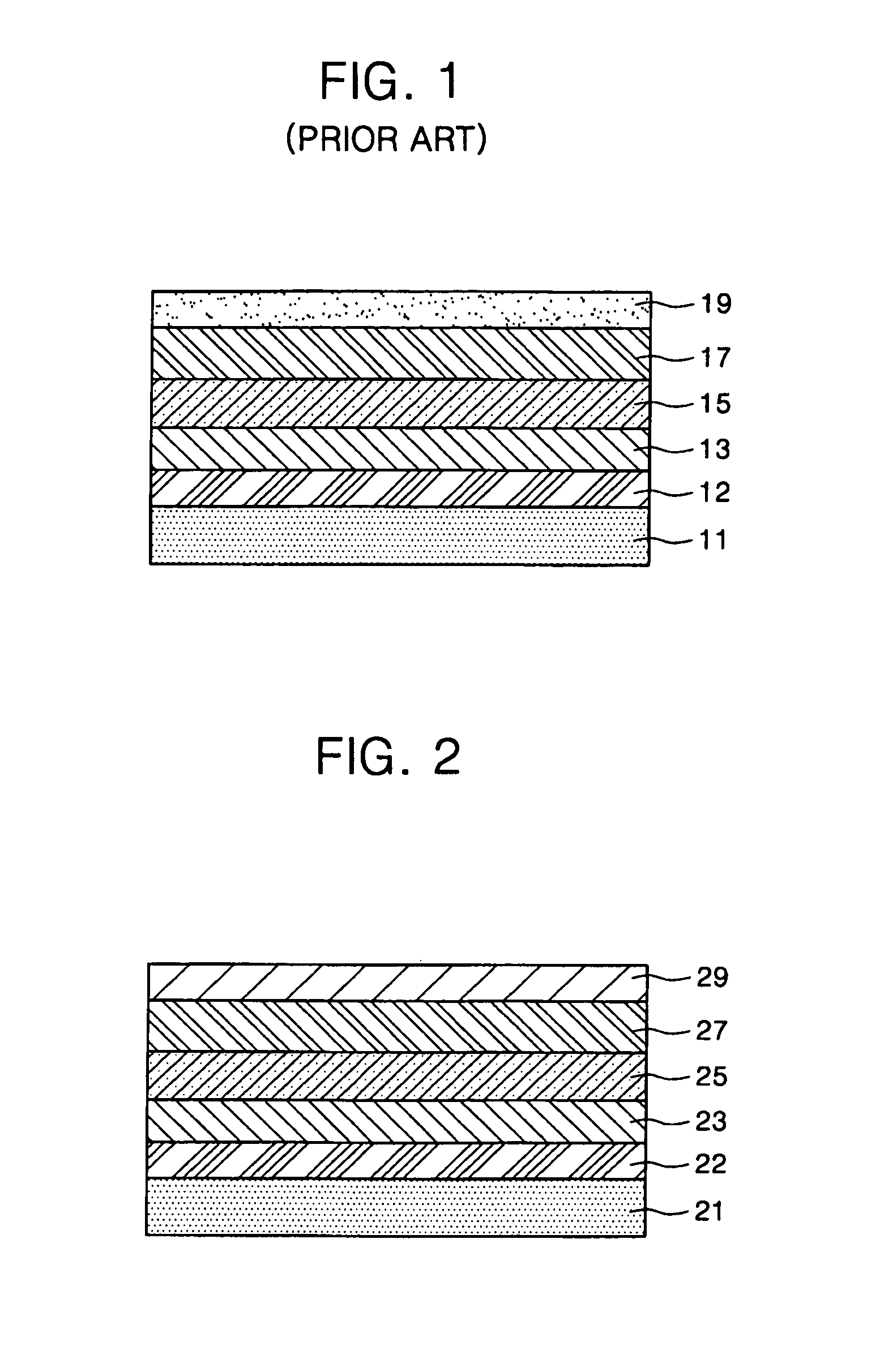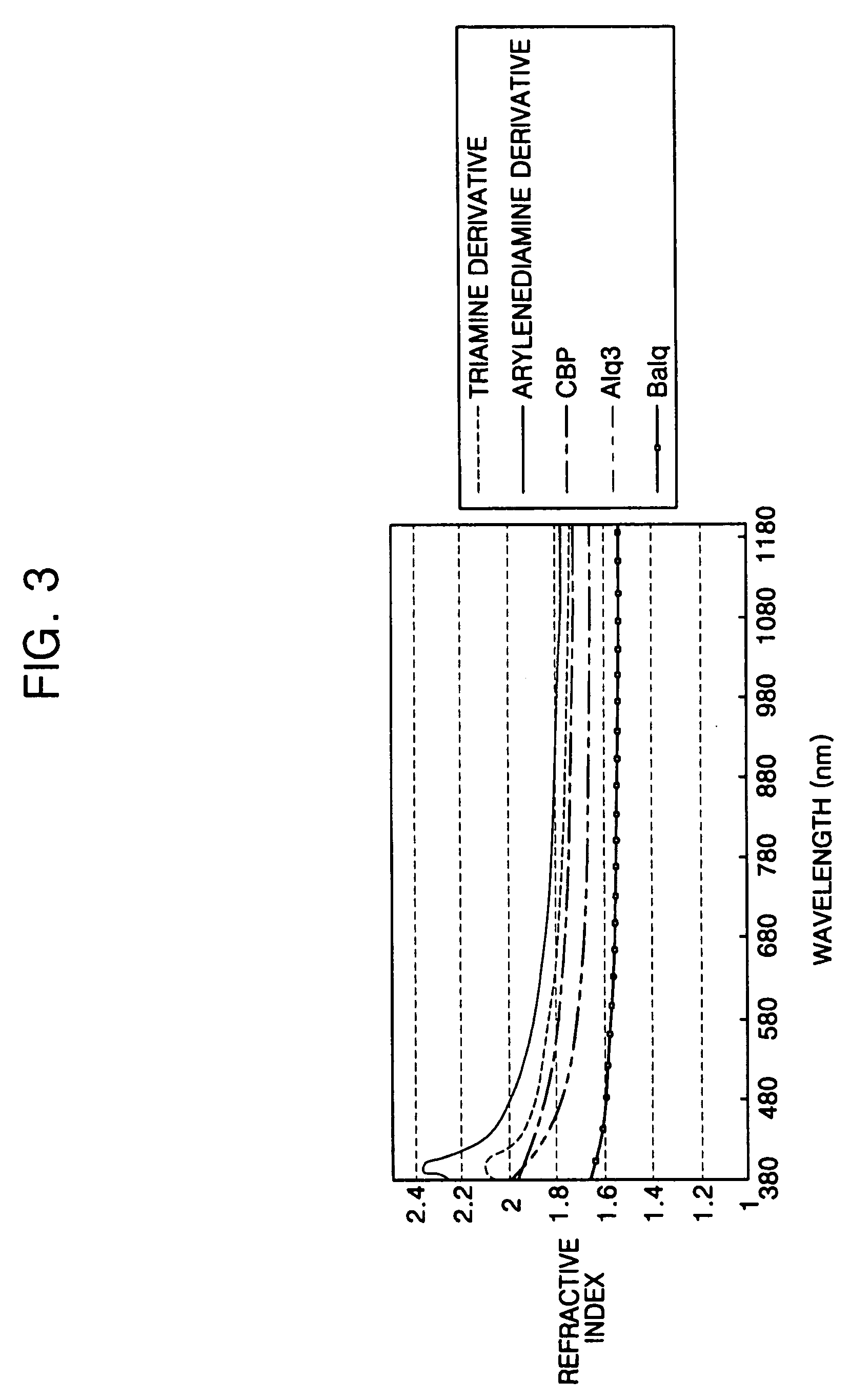Organic light emitting display with organic capping layer having a specific refractive index
a technology of organic capping layer and light-emitting diodes, which is applied in the direction of discharge tube luminescnet screens, discharge tube/lamp details, electric discharge lamps, etc., can solve the problems of top-emitting oled display efficiency degradation, and achieve the effect of long life and high efficiency
- Summary
- Abstract
- Description
- Claims
- Application Information
AI Technical Summary
Benefits of technology
Problems solved by technology
Method used
Image
Examples
embodiment 1
[0053]A glass substrate was prepared. A reflecting layer of a first electrode was formed of Al on the substrate, and ITO was deposited on the reflecting layer of Al. An organic layer was then formed on the ITO by depositing m-TDATA in a hole injection layer, NPB in a hole transport layer, red-CBP:BTPIr, green-CBP:Ir ppy 3 and blue-Alq3:DPBVi in an emission layer, BaIq in a hole blocking layer, Alq3 in an electron transport layer, and LiF in an electron injection layer. MgAg was deposited as a second electrode, and then an organic capping layer having a thickness of 200 Å was deposited by performing vacuum deposition on an arylenediamine derivative having a 1.7 or more refractive index in conditions of 280 to 300° C. in temperature, about 10e−7 in vacuum and 1 Å / sec in a deposition rate, thus completing the top-emitting OLED display.
embodiment 2
[0054]A top-emitting OLED display was formed as in Embodiment 1 except that an organic capping layer was deposited to a thickness of 400 Å.
embodiment 3
[0055]A top-emitting OLED display was formed as in Embodiment 1 except that an organic capping layer was deposited to a thickness of 600 Å.
PUM
 Login to View More
Login to View More Abstract
Description
Claims
Application Information
 Login to View More
Login to View More - R&D
- Intellectual Property
- Life Sciences
- Materials
- Tech Scout
- Unparalleled Data Quality
- Higher Quality Content
- 60% Fewer Hallucinations
Browse by: Latest US Patents, China's latest patents, Technical Efficacy Thesaurus, Application Domain, Technology Topic, Popular Technical Reports.
© 2025 PatSnap. All rights reserved.Legal|Privacy policy|Modern Slavery Act Transparency Statement|Sitemap|About US| Contact US: help@patsnap.com



